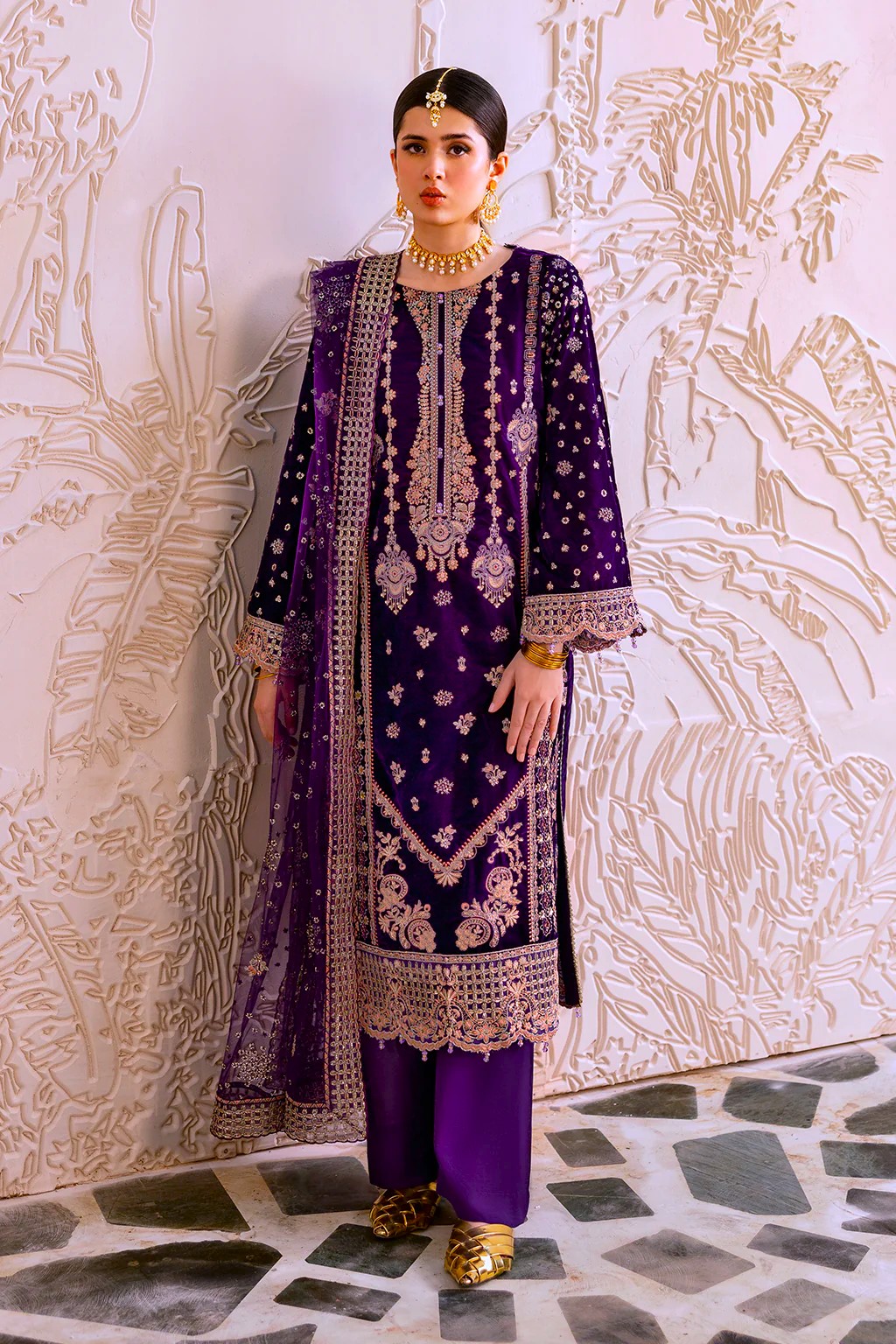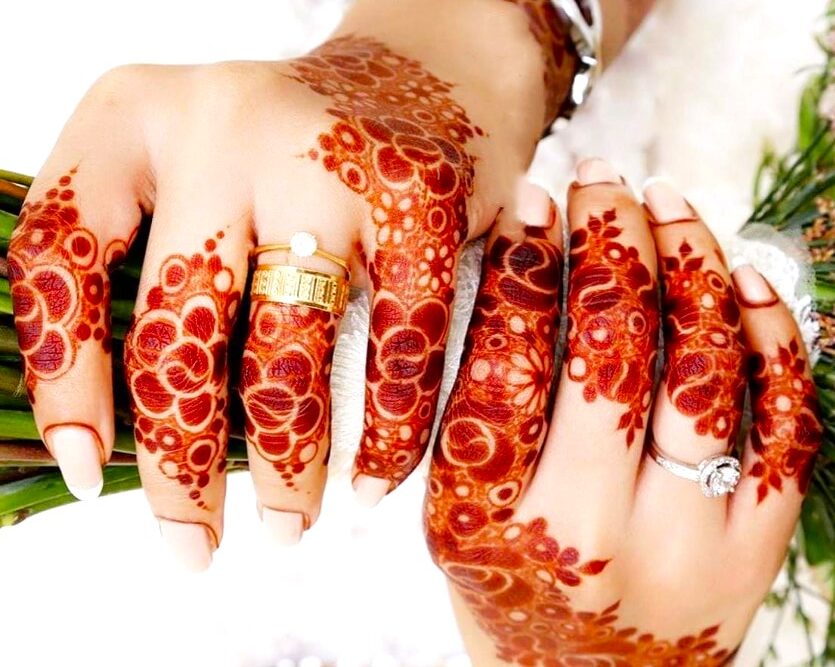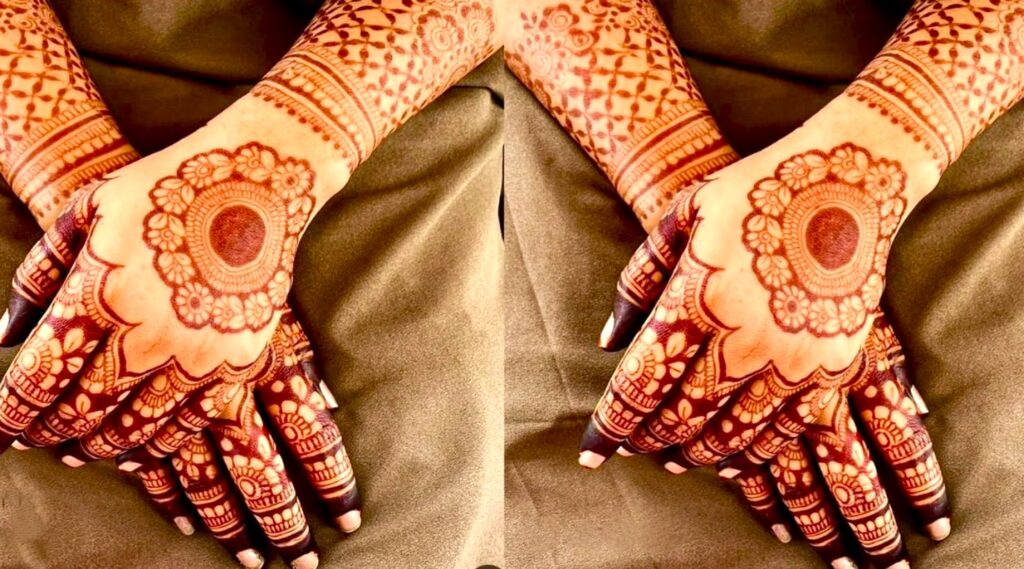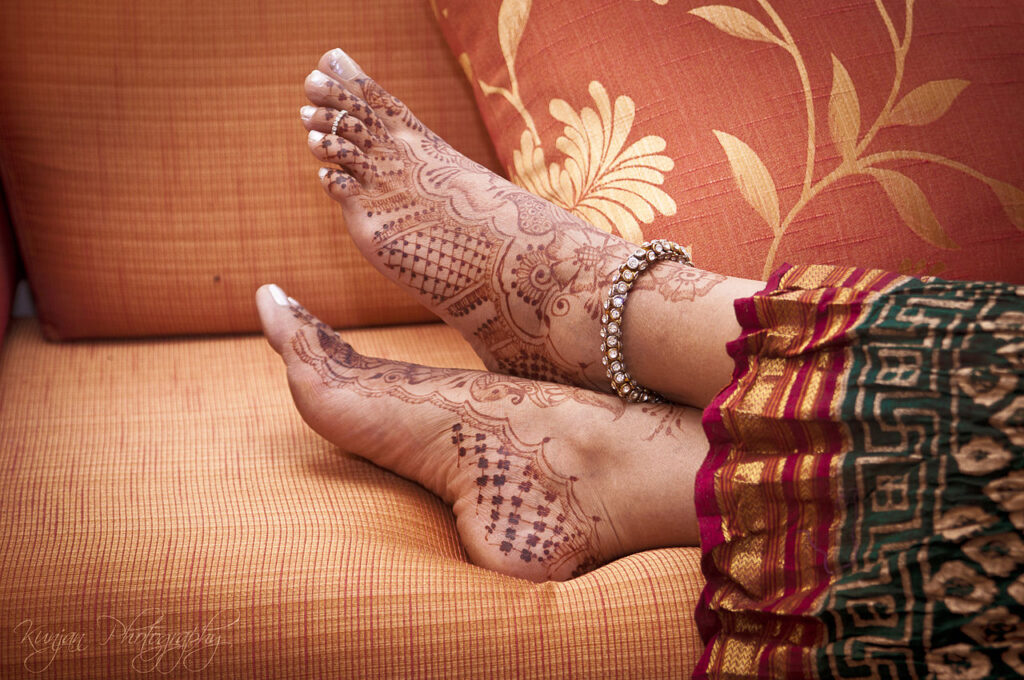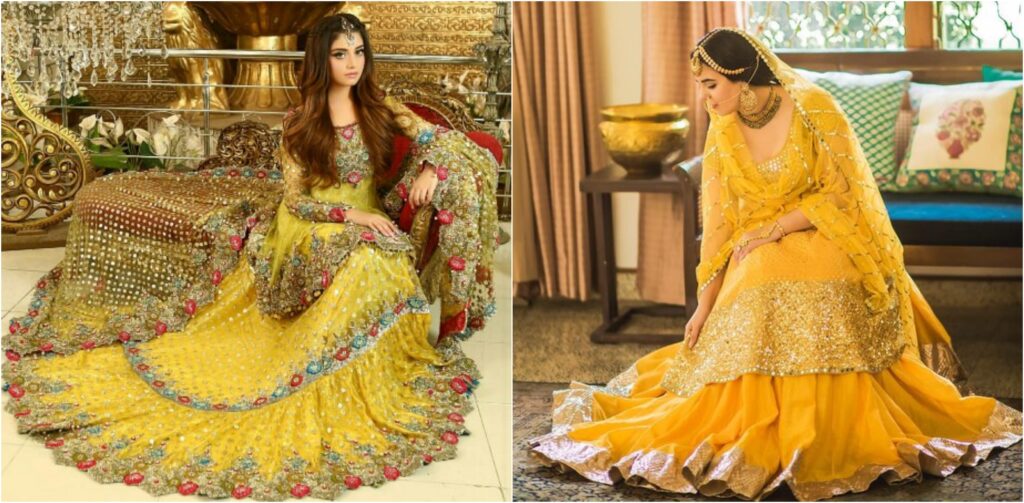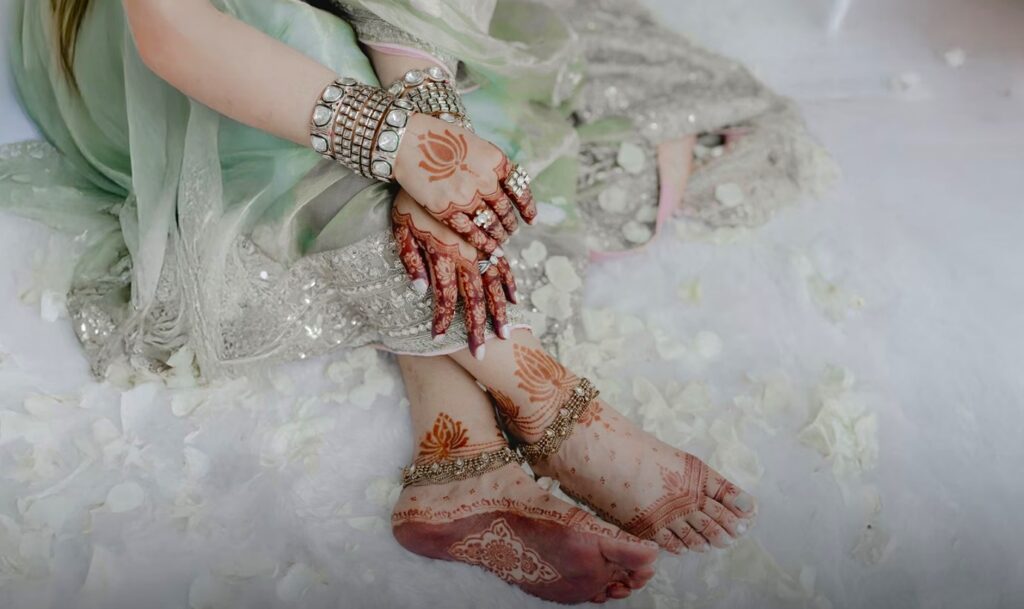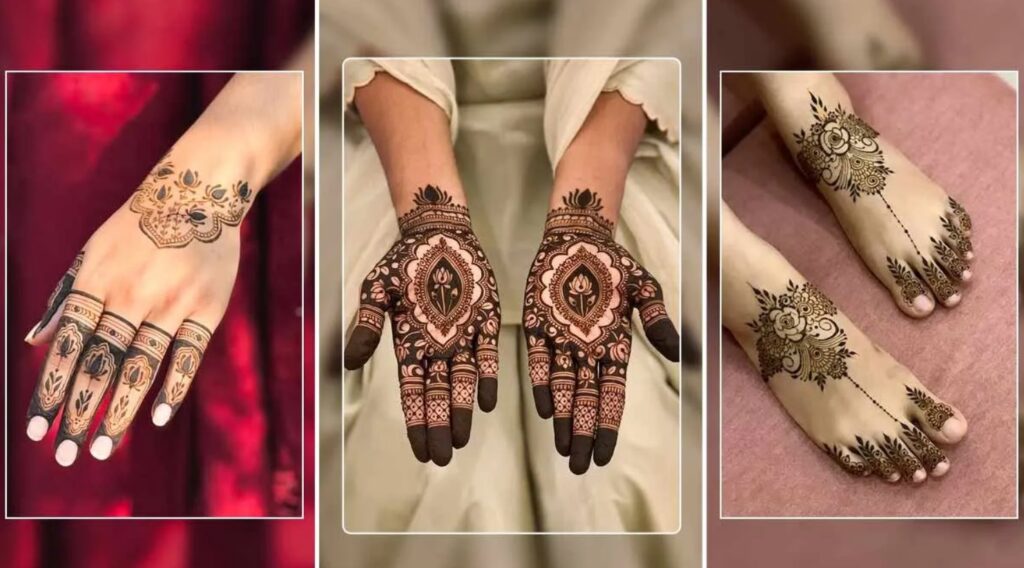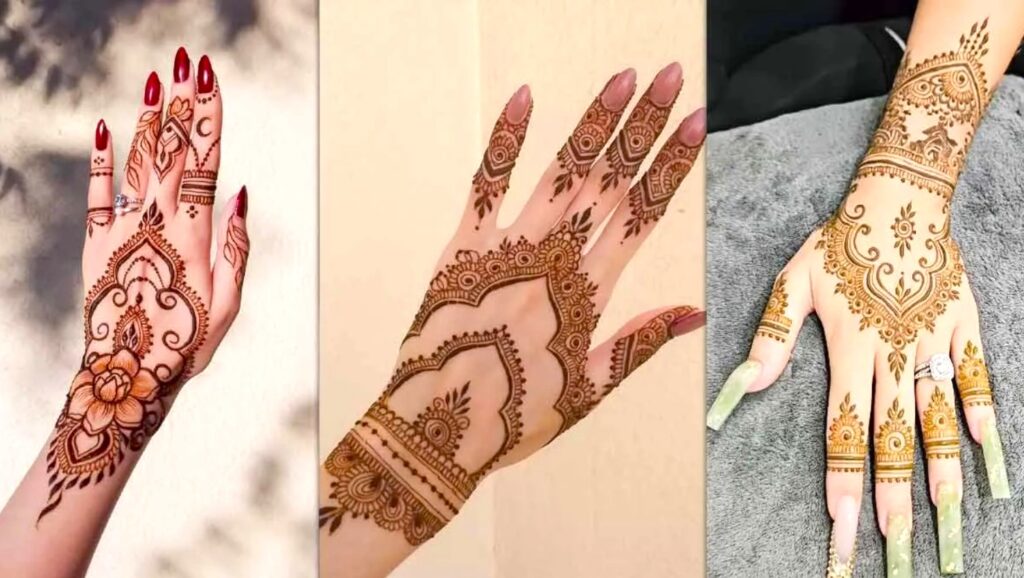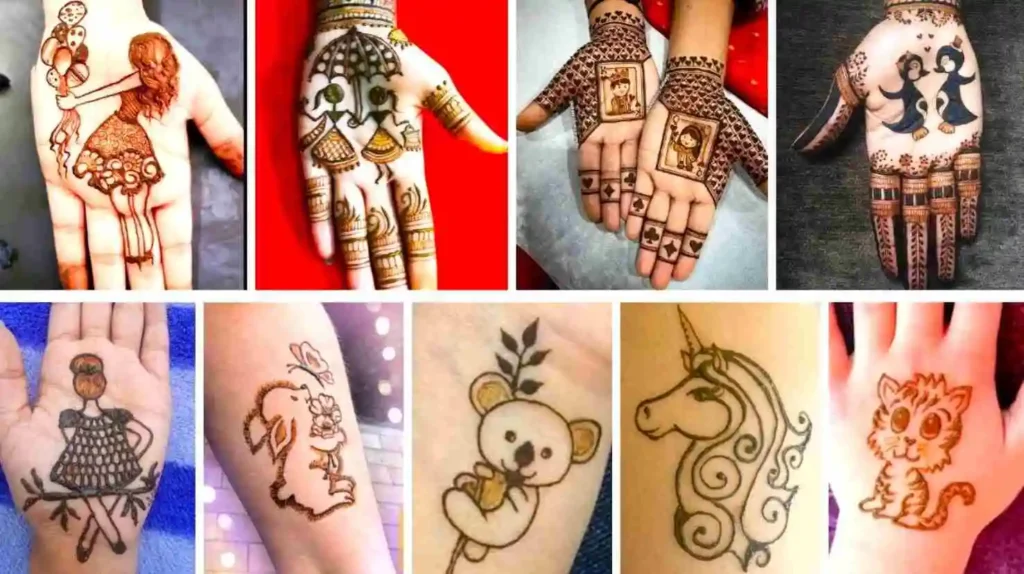Velvet Dress Design
In the heart of Pakistan’s vibrant cultural landscape, where tradition dances with contemporary flair, a powerful style synergy is taking center stage. Imagine the scene: a celebration aglow with warm lights, the air humming with anticipation. Amidst the crowd, a woman commands attention, not just for her presence, but for the breathtaking harmony of her entire aesthetic. Her attire, a masterpiece of velvet dress design, feels both timeless and utterly modern. The rich, plush fabric, often in deep jewel tones or bold contemporary hues, drapes her form, catching the light with a soft, lustrous glow. It speaks of royalty, of elegance, of a confident embrace of heritage. But the story doesn’t end with the dress. Adorning her hands and feet is an intricate, mesmerizing new mehndi design in Pakistan, a delicate lattice of patterns that complements the grandeur of her outfit. The curves of the mehndi design might echo the neckline of the dress; the motifs might playfully interact with the fabric’s texture. This is more than just getting dressed; it is a curated art form. For the truly bold, this temporary art even inspires a more permanent expression, merging with the world of tattoo design to create a personal, lasting signature. This article delves deep into this captivating union, exploring the history, the latest trends, and the expert secrets to mastering the perfect look, where every element, from the velvet dress design to the last dot of mehndi design, is in perfect, unforgettable concert.
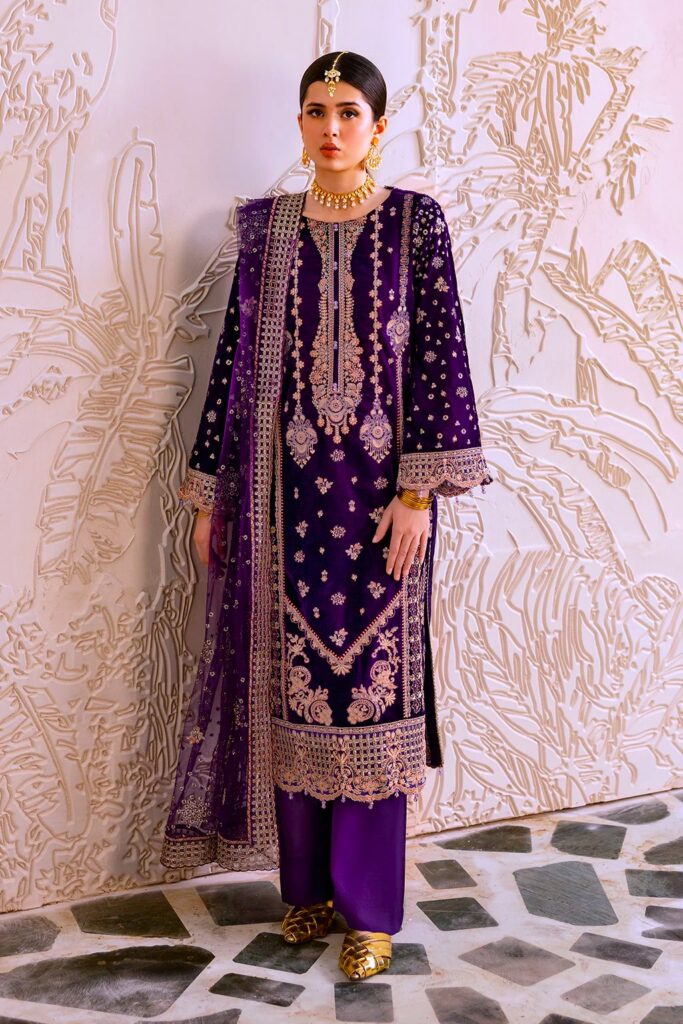
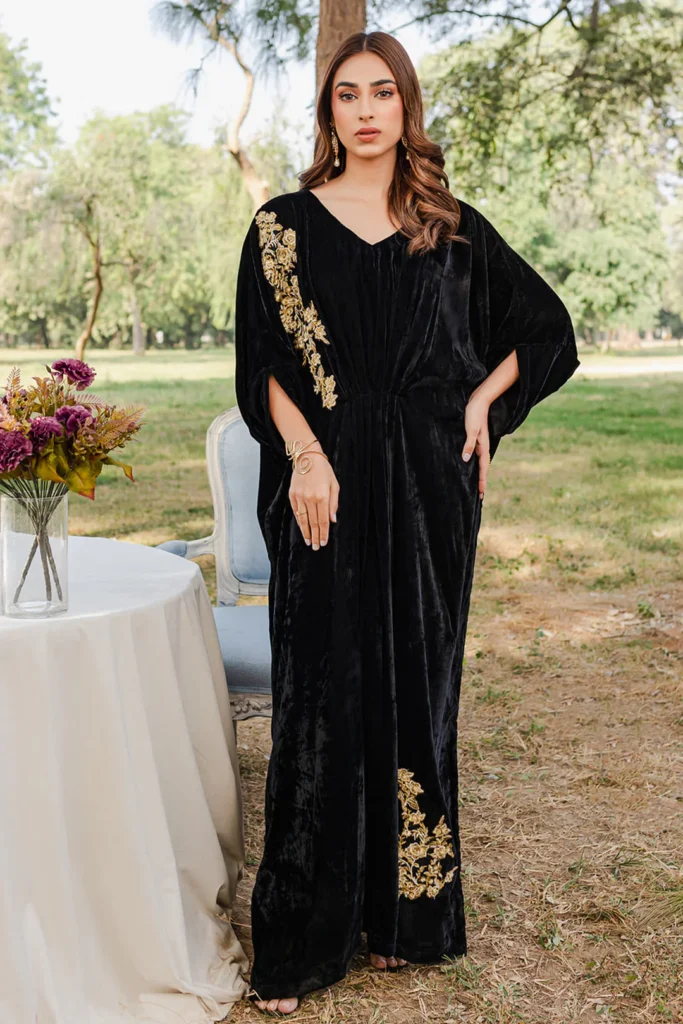
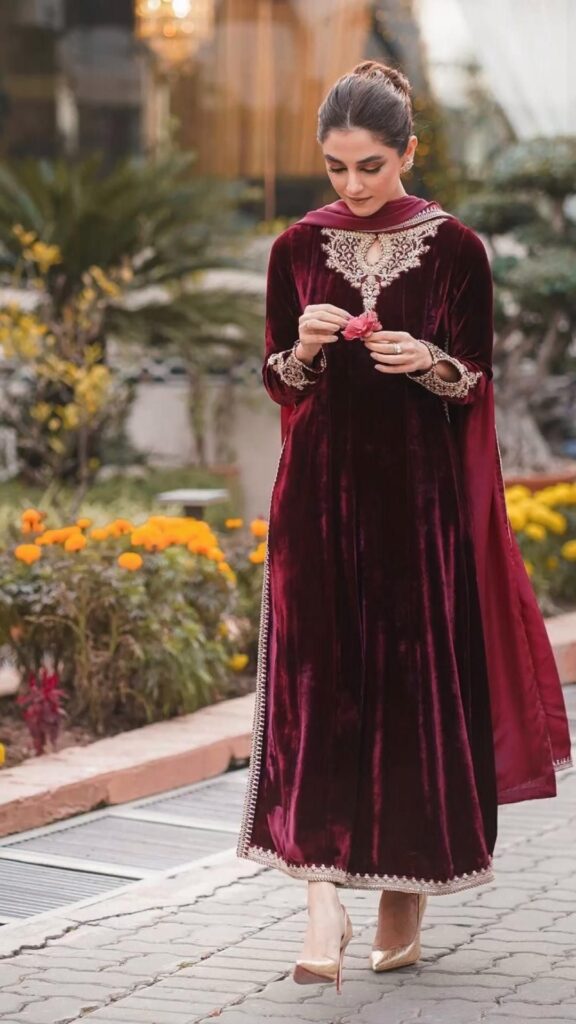
Understanding the Core Elements: Velvet, Mehndi, and Tattoo Artistry
To truly appreciate the magic of this style fusion, we must first understand its components. Each element—the dress, the mehndi, and the emerging influence of tattoos—carries its own weight and history, coming together to create a narrative of personal and cultural expression.
What is a Velvet Dress Design?
A velvet dress design is not merely a garment made from velvet fabric. It is a deliberate creation that leverages the unique properties of velvet—its dense pile, luxurious drape, and light-absorbing and reflecting quality—to create a statement piece. Unlike simpler fabrics, velvet demands a certain level of craftsmanship. The choice of cut, the placement of seams, and the style of embellishments are all critical in handling this noble fabric.
A well-executed velvet dress design can range from a sleek, modern gown to an elaborately embroidered traditional shalwar kameez or lehenga. The design process involves selecting the right type of velvet (crushed, panne, embossed), the perfect color, and silhouettes that enhance the wearer’s form while allowing the fabric to be the star. It’s this intentional design focus that elevates a simple velvet dress into a breathtaking velvet dress design, making it a perennial favorite for festive occasions, weddings, and formal events where making an impression is paramount.
The Evolution of New Mehndi Design in Pakistan
Mehndi design in Pakistan is a living, breathing art form that constantly evolves while staying rooted in tradition. The new mehndi design in Pakistan scene is a dynamic mix of classic motifs and bold, contemporary influences. Gone are the days of only dense, traditional Pakistani patterns covering the entire hand. Today’s trends embrace a variety of styles. We see the delicate beauty of Arabic mehndi—characterized by flowing lines, floral patterns, and more negative space—being seamlessly incorporated.
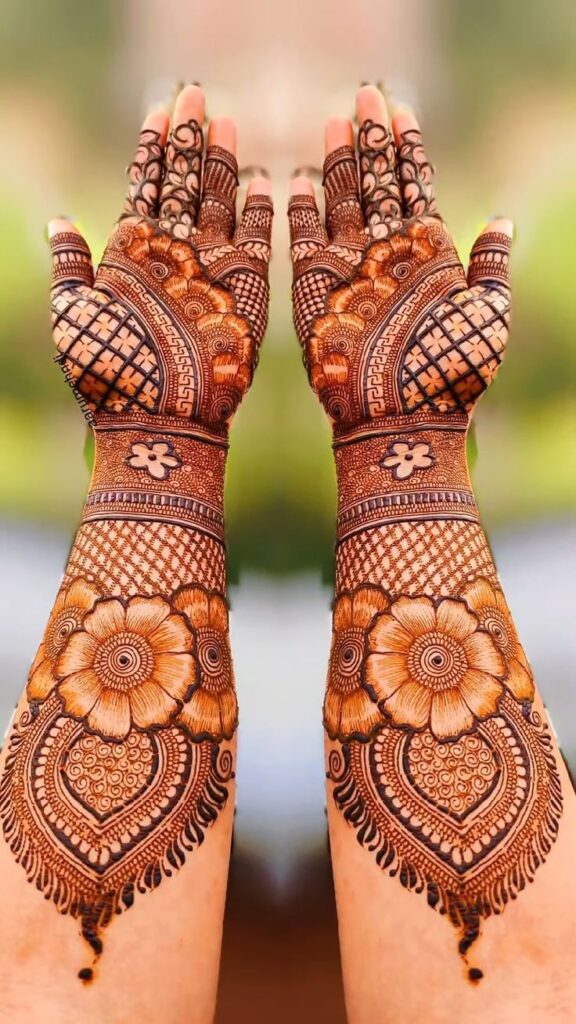
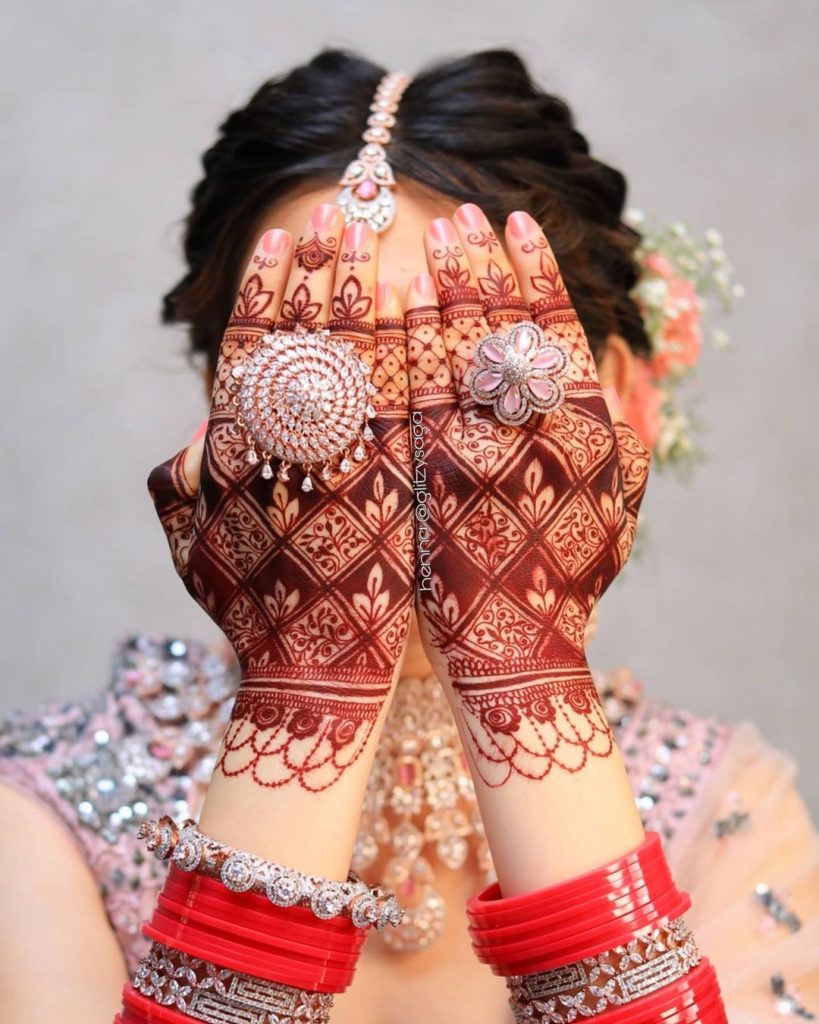
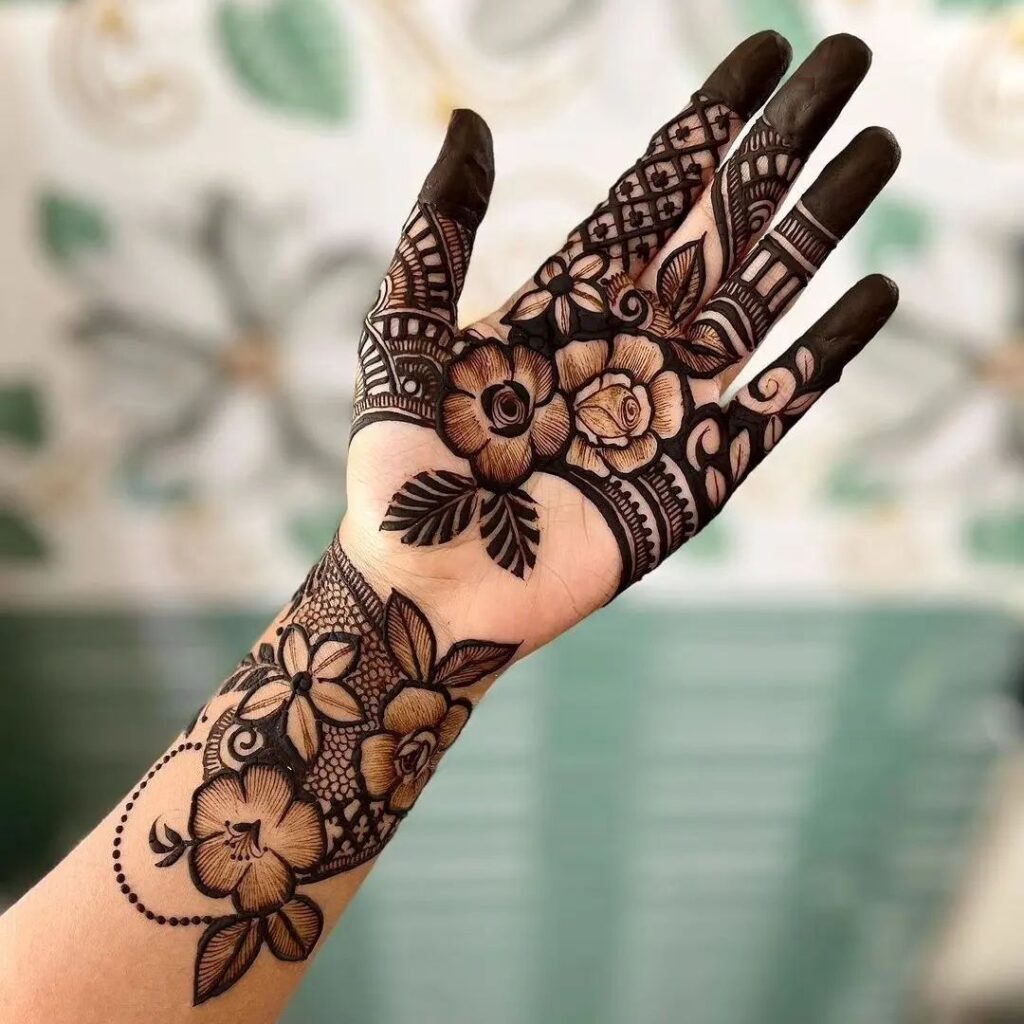
There’s also a strong influence of Indo-Pakistani designs, known for their intricate details, fine lines, and the iconic paisley (or keri) motif. The new mehndi design in Pakistan often includes modern elements like geometric shapes, portrait art, and even figurative scenes, pushing the boundaries of what can be expressed with henna. This evolution reflects a more globalized aesthetic, where wearers seek a mehndi design that is not just culturally significant but also a unique reflection of their personal style, perfectly tailored to complement their outfit, especially a standout velvet dress design.
Tattoo Design as a Permanent Statement
While mehndi design offers a beautiful but temporary adornment, tattoo design represents its permanent counterpart. The world of tattoo design has seen a massive shift in perception, especially in urban centers, moving from subculture to mainstream acceptance. The motifs popular in new mehndi design in Pakistan—such as delicate mandalas, intricate florals, and graceful Arabic scripts—have become a significant inspiration for permanent tattoo design.
People are now choosing to ink patterns that resonate with their cultural identity, creating a permanent connection to the art forms they love. A tattoo design inspired by mehndi is often fine-line, detailed, and placed strategically, much like its temporary inspiration. This crossover highlights a desire to carry a piece of one’s heritage and celebratory identity at all times. The artistry involved in creating a tattoo design that mimics the fluidity and delicacy of henna requires a skilled artist, making it a sophisticated and deeply personal choice.
A Tapestry Woven in Time: The History and Cultural Importance
The story of velvet and mehndi is a story of royalty, ritual, and identity. Their journey through time reveals why they hold such a revered place in South Asian culture, particularly in Pakistan.
The history of velvet is one of luxury and exclusivity. Originating in the East, it was a fabric so complex and expensive to produce that it was initially reserved for royalty and the nobility. Its journey along the Silk Road brought it to the Indian subcontinent, where it was eagerly adopted by Mughal emperors. They recognized its regal potential, using it for their own attire and for lavish court furnishings. This established an enduring association between velvet dress design and opulence.
Similarly, the use of mehndi dates back over 5,000 years. It was used for its cooling properties in desert climates and slowly became an integral part of spiritual ceremonies and celebrations. In Pakistan, the mehndi design ceremony is a cornerstone of weddings, symbolizing joy, prosperity, and the bond of love. The velvet dress design, often worn by the bride or close family members during the Mehndi ceremony itself, complements this symbolism. It represents the grandeur and significance of the occasion. Together, they form a non-verbal language of celebration, heritage, and status, a language that continues to be spoken with passion today.
The 2025 Forecast: Top Trends in Velvet Dresses, Mehndi, and Tattoos
The year 2025 is set to be an exciting one for fashion and body art, with trends that emphasize personal expression, bold choices, and innovative fusion.
Velvet Dress Design Trends for 2025
The velvet dress design of 2025 is all about dramatic silhouettes and rich, unexpected colors.
- Jewel Tones & Moody Hues: While emerald green and royal blue remain classics, look for deeper shades like amethyst, sapphire, and a particularly bold burgundy velvet dress design. Black velvet will always be iconic.
- Statement Sleeves and Cape Details: Dramatic leg-of-mutton sleeves, sleek capes attached to gowns, and exaggerated puff sleeves are adding a touch of modern romance and high fashion to the velvet dress design.
- The Return of the Lehenga: The velvet lehenga is making a massive comeback. Designers are pairing rich velvet skirts with intricate net or silk blouses, creating a stunning textural contrast.
- Cut-Outs and Modern Necklines: Asymmetrical necklines, strategic cut-outs at the waist or back, and sleek halter designs are modernizing the traditional velvet dress design, making it appealing to a younger audience.
- Embellishment 2.0: Instead of all-over heavy work, 2025 focuses on strategic embellishment. Think Art Deco-inspired metallic thread embroidery along the hem or minimalist stone work on the collar, letting the velvet’s texture shine.
New Mehndi Design in Pakistan: 2025 Patterns
The new mehndi design in Pakistan for 2025 is characterized by elegance, storytelling, and a focus on wearability.
- Minimalist & Wrist-Based Designs: Delicate patterns that cover just the fingers and stop at the wrist, or elegant “hand harness” designs that look like jewelry, are incredibly popular for their subtle beauty.
- Negative Space Mastery: Artists are creatively using the natural skin as part of the design, creating shapes, flowers, and motifs out of the blank spaces within the mehndi design.
- Portraits and Figurative Art: Incorporating tiny portraits of loved ones, pets, or even the bride and groom into the mehndi design is a highly personalized and sentimental trend.
- White and Colored Henna: While traditional brown-red henna is classic, white henna (actually a body paint) for pre-wedding shoots and colored henna accents are gaining traction for a unique look.
- Fusion Patterns: The lines between Arabic, Indo-Pakistani, and Moroccan styles are blurring, resulting in a new mehndi design in Pakistan that is truly global and unique to the artist’s and wearer’s vision.
Tattoo Design Inspirations from Mehndi
The influence of mehndi design on tattoo design is stronger than ever.
- Fine-Line Mandalas and Florals: Intricate, detailed mandalas and floral sleeves or back pieces inspired by mehndi design are a top request for tattoo artists worldwide.
- Finger and Hand Tattoos: Mirroring the placement of mehndi, delicate tattoo design on fingers, the side of the hand, and the wrist is a major trend.
- Geometric Henna Fusion: Combining the organic flow of mehndi with sharp, clean geometric lines creates a stunning and modern tattoo design.
- Symbolic Script: Arabic calligraphy or meaningful words in elegant scripts, styled to look like they were drawn with henna, are a popular choice for a deeply personal tattoo design.
Your Step-by-Step Guide to Curating the Perfect Look
Creating a harmonious look between your velvet dress design and mehndi design requires planning. Follow this guide to ensure a flawless presentation.
- Choose Your Velvet Dress First: This is your foundation. Select the color, silhouette, and neckline of your velvet dress design. Is it a deep V-neck, a high collar, or a backless design? The dress’s lines will guide your mehndi.
- Analyze the Embellishments: Look closely at the embroidery or patterns on your dress. Are there specific motifs—like peacocks, florals, or geometric shapes—that your mehndi design can echo?
- Consult Your Mehndi Artist: Share pictures of your dress with the artist. A skilled artist can design a new mehndi design in Pakistan that complements the dress’s style. For a high-neck dress, a design extending up the forearm might be perfect. For a backless dress, a complementary back mehndi design could be stunning.
- Consider Color Coordination: If your velvet dress design is a unique color, discuss with your artist if any elements (like glitter or colored cones) can be subtly incorporated to tie the look together.
- Think About Permanence: If you love your mehndi design and want it forever, consult a reputable tattoo artist. They can help translate the temporary art into a permanent tattoo design that you can cherish long after the event.
The Pros and Cons: Weighing Your Options
Every fashion and beauty choice comes with its own set of advantages and considerations.
Benefits of a Velvet Dress and Mehndi Combo
- Unmatched Elegance: The combination is inherently royal and photogenic, ensuring you look and feel spectacular.
- Cultural Authenticity: It’s a powerful way to connect with and celebrate Pakistani heritage and traditions.
- Versatility in Expression: From a modern minimalist velvet dress design with a delicate mehndi design to a fully traditional look, the spectrum is vast, allowing for true personalization.
- Timeless Appeal: While trends change, a classic velvet dress design and beautiful mehndi never truly go out of style.
Drawbacks and Considerations
- Seasonal Limitations: Velvet is a warm fabric, making it less ideal for hot, humid summer days.
- High Maintenance: Velvet can crush and attract lint, requiring careful storage and cleaning. Mehndi requires drying time and can be messy during application.
- Cost: A high-quality custom velvet dress design and a skilled mehndi artist can be a significant investment.
- Allergic Reactions: It’s crucial to patch-test henna to avoid reactions to black henna with PPD. Similarly, a tattoo design is a serious commitment with its own risks.
Expert Tips for a Flawless Execution
To ensure your look is perfect from every angle, here are some pro tips.
- For the Velvet Dress: Always steam velvet; never iron it directly, as it can crush the pile. Use a garment bag for storage. Choose undergarments that are seamless to avoid visible lines on the plush fabric.
- For the Mehndi Design: Keep the mehndi on for as long as possible (6-8 hours) for a darker stain. Apply a sugar-lemon juice solution on top to seal it. Avoid water on the design for the first 24 hours.
- For the Tattoo Design: If considering a tattoo design inspired by mehndi, research artists who specialize in fine-line and geometric work. Look at their portfolios to ensure their style matches your vision.
- The Overall Look: Don’t over-accessorize. Let your velvet dress design and mehndi design be the stars. Choose jewelry that complements rather than competes—e.g., statement jhumkas with a simple necklace.
Common Mistakes to Avoid
Steer clear of these pitfalls to guarantee a stunning outcome.
- Clashing Patterns: An overly busy velvet dress design with an equally dense and complex mehndi design can look chaotic. Strive for balance.
- Ignoring the Dress Neckline: A mehndi design that doesn’t account for the dress’s neckline can look disconnected. Ensure visual harmony.
- Choosing the Wrong Velvet Type: For curvier figures, stiff panne velvet might not be as flattering as soft, draping crushed velvet.
- Last-Minute Mehndi Appointments: Book your artist months in advance, especially during wedding season, to secure the best talent for your new mehndi design in Pakistan.
- Rushing the Tattoo Decision: A tattoo design is permanent. Never rush the process. Sit with your chosen design for a few months to be sure.
The Future Scope: Where is This Fusion Heading?
The fusion of velvet dress design, mehndi design, and tattoo design is poised for even more innovative leaps. We can expect to see technology playing a bigger role, with digital design tools helping clients visualize their complete look before committing. Sustainable fashion will influence velvet dress design, with a rise in recycled and eco-friendly velvets. In mehndi, we might see bio-glitters and entirely new, safe coloring agents becoming mainstream. The line between temporary and permanent will continue to blur, with the rise of semi-permanent tattoo inks that last for a year or two, allowing people to “test” a tattoo design inspired by their favorite mehndi design. This artistic triad is not a passing trend but an evolving dialogue between personal identity, cultural pride, and global aesthetics.
Frequently Asked Questions (FAQs)
1. What is the best color for a velvet dress design for a Mehndi function?
For a daytime Mehndi, vibrant jewel tones like emerald, ruby red, or royal blue are stunning. For an evening event, deeper hues like navy, burgundy, or even a bold black velvet dress design create a dramatic, elegant look. The color should complement your skin tone and the mehndi design you choose.
2. How can I make my new mehndi design in Pakistan last longer?
To ensure a dark, long-lasting stain for your mehndi design, keep the paste on for 6-8 hours, avoid water for the first 24 hours, and apply a balm of lemon juice and sugar on top. Moisturizing the area with natural oils like olive or coconut oil in the following days will also help lock in the color.
3. Can a tattoo design perfectly replicate a mehndi design?
While a skilled artist can come very close, a tattoo design is permanent ink under the skin, while mehndi is a stain on top. The finest, most delicate lines of a mehndi design may need to be slightly adapted for a tattoo design to ensure it ages well without blurring over time.
4. What are the current trends in velvet dress design for 2025?
2025 trends for velvet dress design include dramatic cape sleeves, sleek column gowns, and modern lehengas. Colors are shifting towards moody, deep jewel tones, and embellishments are becoming more strategic and artistic, like Art Deco-inspired embroidery, rather than all-over heavy work.
5. Is it cultural appropriation to get a mehndi-inspired tattoo design?
If done with respect, understanding, and appreciation for the cultural significance of mehndi design, it is generally seen as cultural appreciation. It’s important to acknowledge the art form’s origins and avoid sacred or religious symbols without understanding their meaning.
6. What is the difference between Arabic and Pakistani mehndi design?
Arabic mehndi design typically features larger floral motifs, flowing lines, and more negative space. Pakistani mehndi design (often overlapping with Indian styles) is known for its high intricacy, dense patterns, fine lines, and symbolic motifs like paisleys and peacocks. The new mehndi design in Pakistan often fuses both.
7. How should I accessorize a heavily embroidered velvet dress design?
With a heavily embroidered velvet dress design, less is more. Choose statement earrings (like jhumkas) but skip a necklace to let the neckline shine. A classic clutch and elegant heels will complete the look without competing with the dress or your mehndi design.
8. What should I avoid in a mehndi design for a velvet dress?
Avoid a mehndi design that is too sparse if your dress is heavily embellished, as it can look unbalanced. Also, avoid placing mehndi in a way that it will be completely covered by the dress’s sleeves or fabric, wasting the artistry.
9. Can men incorporate this velvet and mehndi trend?
Absolutely. Men can opt for a velvet sherwani or a velvet jacket. A simpler, more geometric mehndi design on the hands or a permanent tattoo design with cultural motifs is a great way to embrace this trend with a masculine edge.
10. How do I choose between a temporary mehndi and a permanent tattoo design?
Consider the occasion and your commitment level. Mehndi design is perfect for a specific event like a wedding. A tattoo design is a lifelong commitment. Many start with mehndi and, if they find a design they love, later get it inked permanently.
11. What fabrics pair well with velvet in a dress design?
Designers often pair velvet with sheer nets, chiffon, georgette, or silk to create beautiful textural contrasts. For example, a velvet bodice with a net skirt, or a velvet lehenga with a silk cape, enhances the overall velvet dress design.
12. Are there any specific motifs in new mehndi design in Pakistan for brides?
Bridal mehndi design often includes hidden motifs of the groom’s name, wedding date, portraits of the couple, or symbols representing their love story. Traditional motifs like peacocks (for beauty) and paisleys (for fertility) also remain popular.
13. What is the average cost of a custom velvet dress design?
The cost can vary wildly based on fabric quality, designer reputation, and intricacy of work. A simple custom velvet dress design may start from a moderate price, while a heavily embroidered designer lehenga can be a significant investment.
14. How long does it take to apply a full-hand mehndi design?
A full, intricate mehndi design covering both hands and feet can take anywhere from 4 to 8 hours, depending on the complexity and the speed of the artist. It’s a process that requires patience.
15. Can I wear a velvet dress design in the summer?
It can be challenging. Opt for lighter silhouettes, short sleeves, and breathable linings. A velvet dress design for a summer event is best reserved for air-conditioned indoor venues or cooler evening functions.

